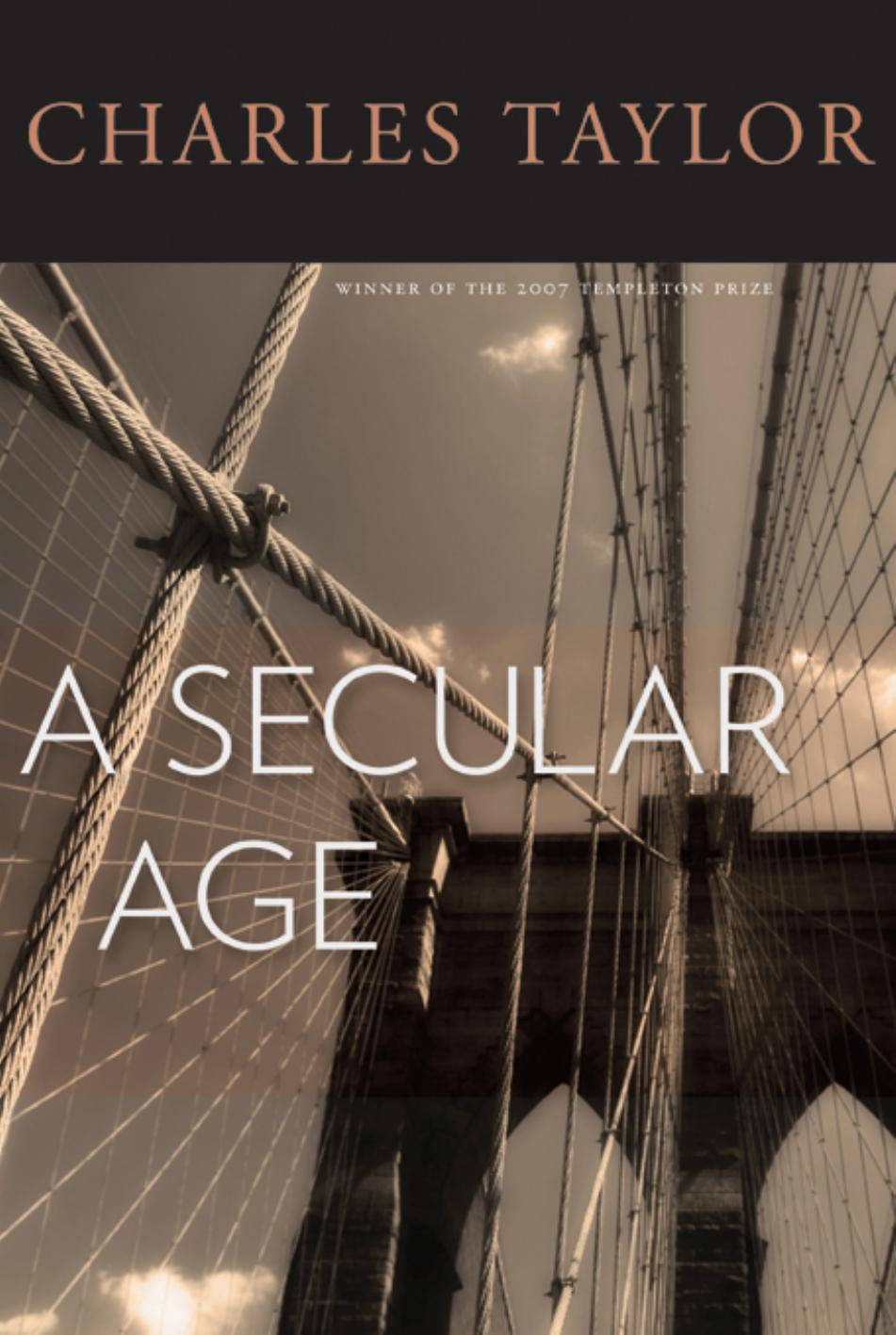A Secular Age by Charles Taylor

Author:Charles Taylor
Language: eng
Format: mobi, epub, pdf
Tags: Religion, History & Surveys, Philosophy, Religious, General
ISBN: 9780674026766
Publisher: Harvard University Press
Published: 2007-09-19T22:00:00+00:00
2
Perhaps I can give a better idea of what this reading involves by offering an outrageously simplified potted history of the last two-and-some centuries, the move from an age of some élite unbelief (the eighteenth century) to that of mass secularization (the twenty-first). I want to introduce some Weber-style ideal types in order to mark the distinction between the different stages.594 I talked earlier of religious forms which were undermined by later developments. These can perhaps best be defined in terms of two aspects: the social matrix within which religious life was carried on, and the forms of spirituality which this life consisted in.
The first ideal type is the “ancien régime” matrix. Here, invoking my discussion above about the development of modern social imaginaries, we can say that the understanding of order widespread among the people (as against the Enlightenment conceptions circulating among élites) is of a pre-modern kind, an order of hierarchical complementarity, which is grounded in the Divine Will, or the Law which holds since time out of mind, or the nature of things. This notion of order holds both for the larger society: we are subordinated to King, Lord, Bishops, nobility, each in their rank; and also for the microcosm of the village or the parish, where priest and noble (or in England, squire and parson) hold sway, and each person has their place. Indeed, we only belong to the larger society through our membership in this local microcosm.
In this parish world, collective ritual still has a large place, even in societies which have undergone Reform. This is partly to do with what rituals have been handed down, and here there is a gamut, where the list will obviously differ from Catholic to Protestant societies. But in spite of all attempts in the latter (and even in some Catholic areas, e.g., those dominated by Jansenists) to expunge “magical” and “pagan” elements,595 there were substantial elements of “folk religion” in England, for instance. This might consist not so much in forbidden rituals (though those existed, in the consulting of “cunning women” for instance), as in an unorthodox meaning given to church feasts. Thus in some parts of England, Good Friday was important, not only for the theologically orthodox reason, but because the power it carried made it a good day for planting crops, and enabled hot cross buns to save houses from fire. Similar unofficial meanings inhered in New Year’s Eve, St. Mark’s Eve (April 24), Hallowe’en, and St. John’s Eve (June 23). These rituals often had their origin in earlier pagan customs (for instance, Hallowe’en drew partly on the Celtic festival of Samhain) and they were concerned “to ward off evil, bring good luck and cement the solidarity of the community”.596 Unless they were persecuted and harried by the authorities, most parishioners felt no opposition between their more orthodox liturgical life and these unofficial beliefs and rituals. It was part of the sanctity of a particular time, like Good Friday, that it could have these other beneficent effects.
Download
A Secular Age by Charles Taylor.epub
A Secular Age by Charles Taylor.pdf
This site does not store any files on its server. We only index and link to content provided by other sites. Please contact the content providers to delete copyright contents if any and email us, we'll remove relevant links or contents immediately.
| Buddhism | Christianity |
| Ethnic & Tribal | General |
| Hinduism | Islam |
| Judaism | New Age, Mythology & Occult |
| Religion, Politics & State |
Cecilia; Or, Memoirs of an Heiress — Volume 1 by Fanny Burney(31333)
Cecilia; Or, Memoirs of an Heiress — Volume 3 by Fanny Burney(30934)
Cecilia; Or, Memoirs of an Heiress — Volume 2 by Fanny Burney(30889)
The Secret History by Donna Tartt(16627)
Sapiens: A Brief History of Humankind by Yuval Noah Harari(13054)
Leonardo da Vinci by Walter Isaacson(11903)
The Radium Girls by Kate Moore(10907)
Sapiens by Yuval Noah Harari(4537)
The Wind in My Hair by Masih Alinejad(4424)
How Democracies Die by Steven Levitsky & Daniel Ziblatt(4399)
Homo Deus: A Brief History of Tomorrow by Yuval Noah Harari(4280)
Endurance: Shackleton's Incredible Voyage by Alfred Lansing(3845)
The Silk Roads by Peter Frankopan(3762)
Man's Search for Meaning by Viktor Frankl(3634)
Millionaire: The Philanderer, Gambler, and Duelist Who Invented Modern Finance by Janet Gleeson(3569)
The Rape of Nanking by Iris Chang(3516)
Hitler in Los Angeles by Steven J. Ross(3437)
The Motorcycle Diaries by Ernesto Che Guevara(3333)
Joan of Arc by Mary Gordon(3259)
